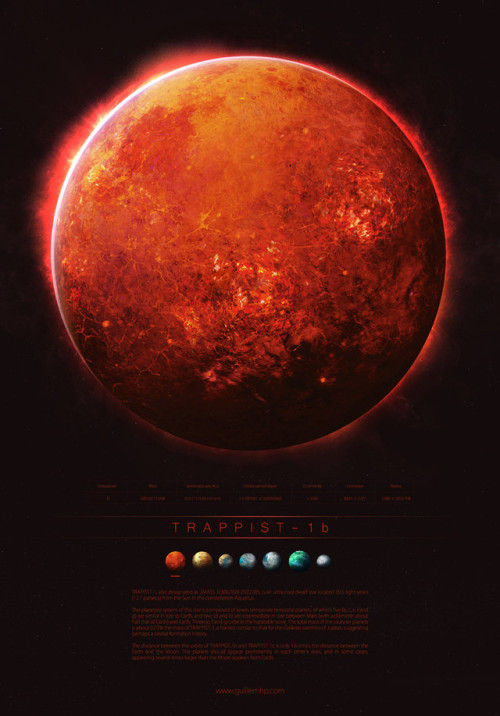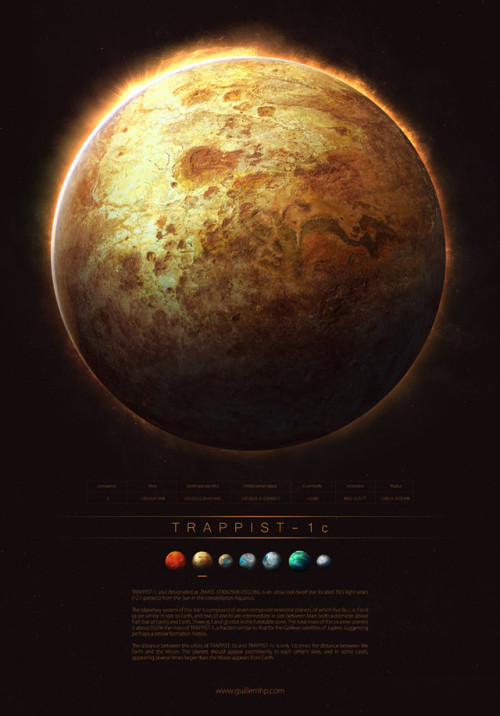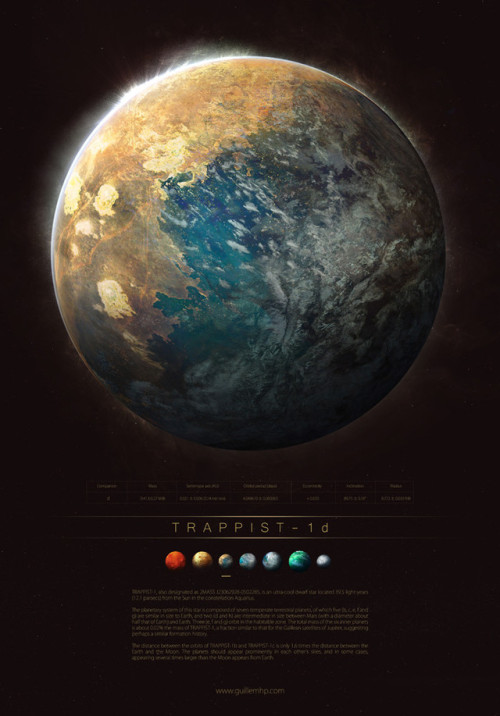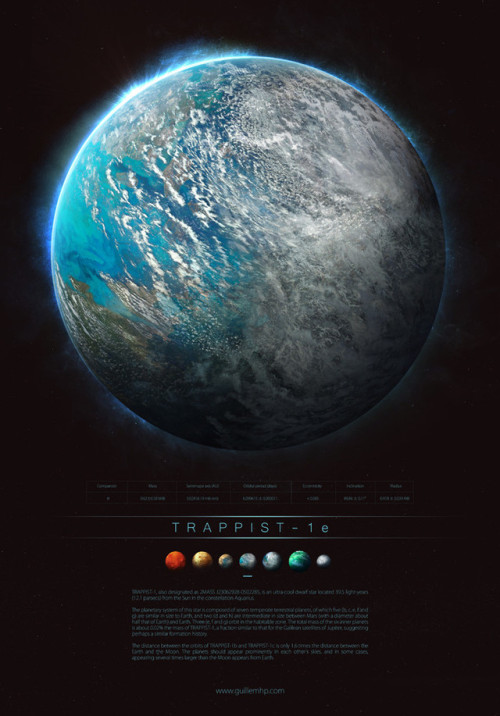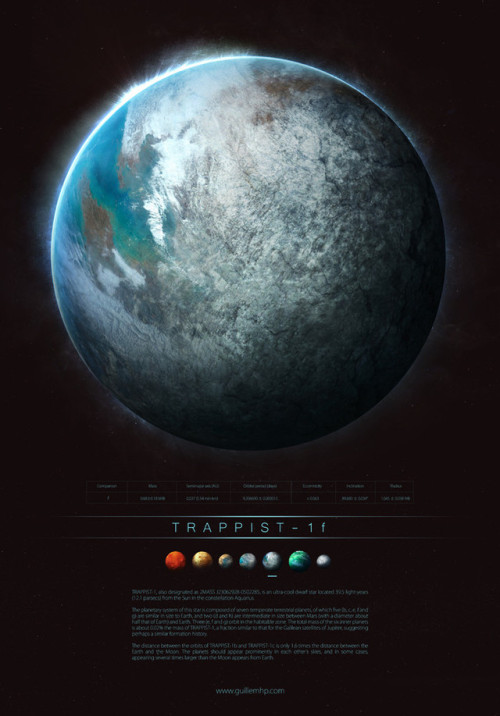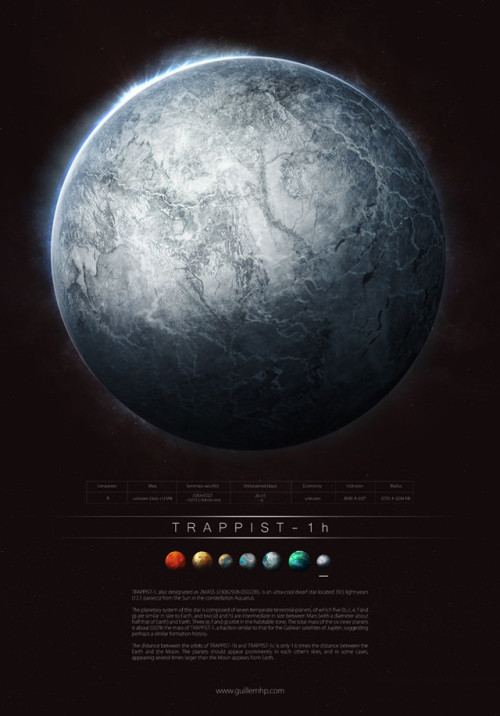Cold Green World
Cold Green World

Picture of the day 2 - November 10, 2018
A cold ice-giant and one it’s moons passing in front of the disk of the Milky Way.
More Posts from Sharkspaceengine and Others
If the earth had rings, would we see them when it was night? It's a stupid question but still
Yes, just as the moon reflects the light of the Sun, the rings also reflect. But perhaps they would not be like the rings of Saturn, they would be smaller because the Earth has the gravity smaller than the one of Saturn to hold them and also they would not be made of ice, because they would be closer to the Sun. There is a specific point in the System Solar known as “ice line” or “snow line”. This is the point in the Solar System, where ice deposits could have survived for long periods of time. Any closer and the radiation from the Sun sublimates the ice away. Instead, the rings could be made of rock and dust.






Green Desert

Picture of the Day - November 2, 2018
Weird green desert-world rich in life, but lacking any bodies of surface liquids. Planet has a thin carbon dioxide atmosphere, average surface temperature of 73°F on the day side and is tidally locked to the sun.






Triangulum Log - Blue Veil System - Post 2 (Inner Giants)
The inner two planets of the system, a hot ice giant and warm gas giant.
The inner planet orbits 0.16 AU from the sun, has a mass 12 times that of Earth and an average atmospheric temperature of 813° F.
The second world is a Saturn-like gas giant with an impressive ring system. It orbits 0.64 AU from the sun, has a mass of 82 Earths, and a single large satellite orbiting it.
High Resolution Images
Image 1 - Inner-most Planet (Hot Ice Giant)
Image 2 - Two Suns in the sky
Image 3 - Stunning Rings
Image 4 - Giant in the sky
Image 5 - Lone Companion
Image 6 - Twin suns against the rings

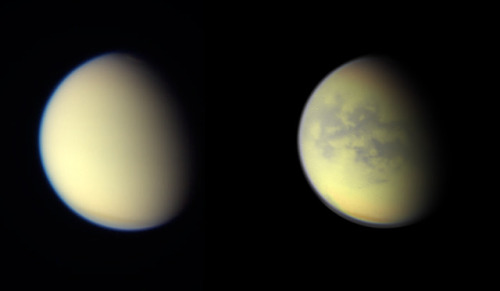




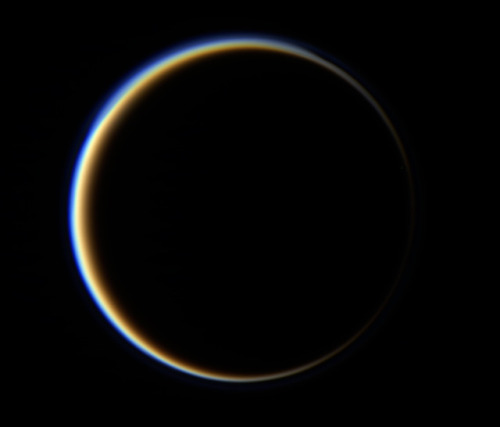

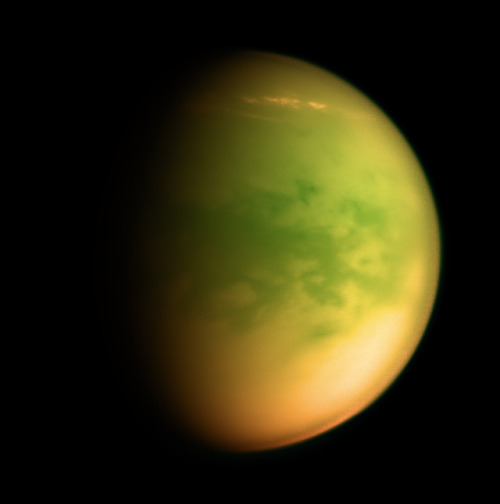
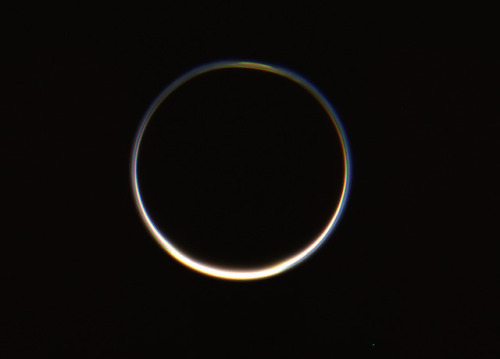
Images taken by the Cassini & Voyager spacecraft of Titan, Saturn’s largest moon. Titan is the only moon in the Solar System to have a thick atmosphere and lakes of hydrocarbons (methane and liquid ethane).
To know more about the moon Titan click here
Image credit: NASA/JPL/SSI/Cassini & Voyager ( precessed by: Kevin Gill )

Picture of the day - November 29, 2018
Its been a while since I showcased an entire star system on here, so the next several sets of pictures will be all the planets in this one system that I am going to name the “Insight System” after the newest Mars lander. Many more picture to come.
Above is a preview pic of the system. This is a binary system, so the planet’s night sides are all faintly illuminated.







Oculus System - Post 3 (Cratered Wasteland)
The system’s third planet is a nearly airless Mars-sized world, heavily cratered world. The planet orbits 1.19 AU from the sun, has a mass of just 8.6% that of Earth and roughly half of Earth’s diameter. A tenuous carbon dioxide atmosphere clings to the surface with a surface press of just 1/100,000th that of Earth. Surface temperatures can reach the boiling point of water during the day, and fall nearly -300 °F at night.
High Resolution Pics
Picture 1 - Mercury-like planet
Picture 2 - Two small satellites
Picture 3 - A view from a moon
Picture 4 - Setting Sun.
Picture 5 - Broken Crater
Picture 6 - From just 10 km above the surface.
Picture 7 - The Surface

Picture of the day 2 - December 21, 2018
Dwarf planet it’s moon. Part of the Insight A System.

Picture of the day - February 6, 2019 - (Very late post)
Ringed ocean world with greenish-gray colored oceans. The Carina Nebula fills the sky in the background.
Blue Titan

Picture of the day - October 12, 2018.
Blue-tinted Titan-Like world with liquid methane oceans and an extensive ring system.
My Space Engine Adventures, also any space related topic or news. www.spaceengine.org to download space engine. The game is free by the way. Please feel free to ask me anything, provide suggestions on systems to visit or post any space related topic.Check out my other blog https://bunsandsharks.tumblr.com for rabbit and shark blog.
294 posts

